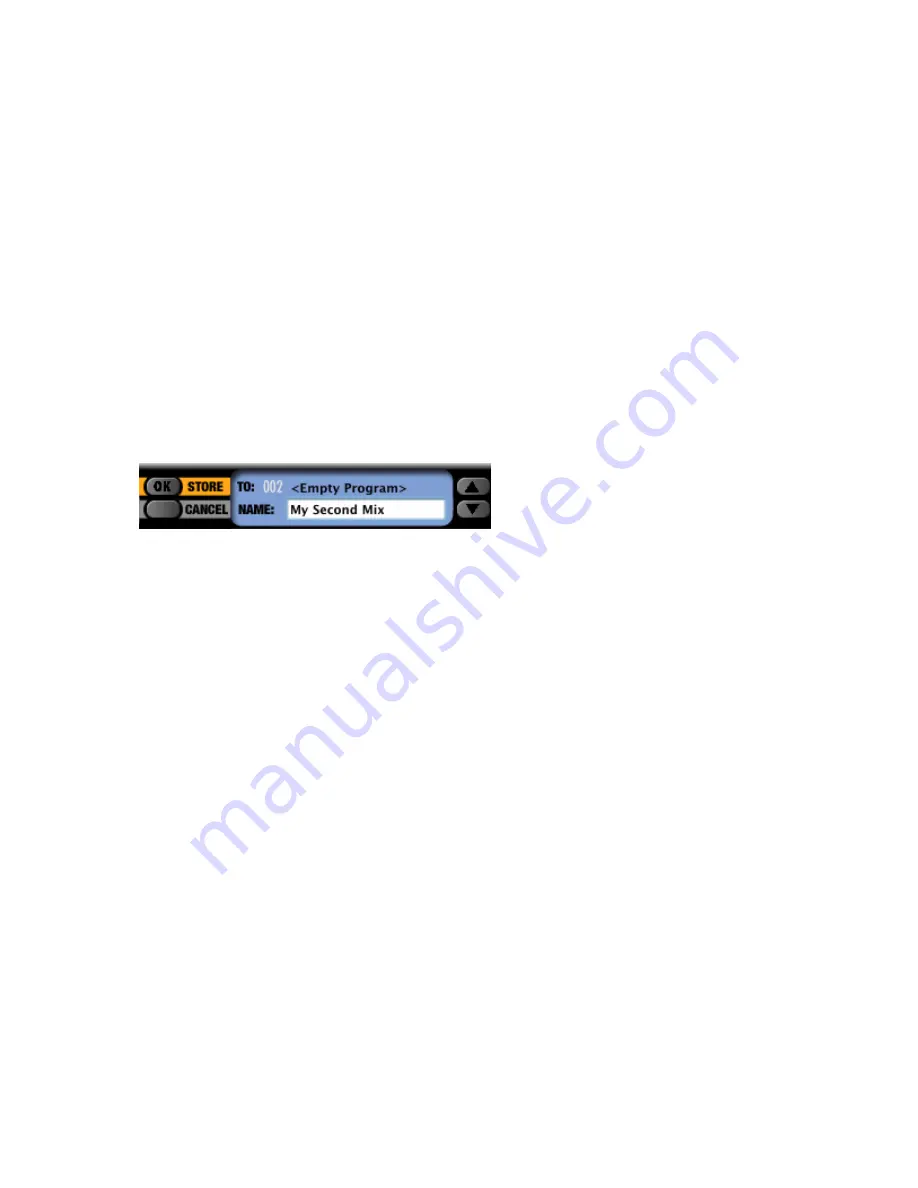
8
1.2.2.5
Processing Additional Channels:
The instructions above apply to all channels of NRV10 interFX. When selecting your
input sources (microphones, turn-tables, etc) for the NRV10 Mixer, keep in mind that
channels 1 through 4 are mono channels, and channels 5/6 and 7/8 are stereo
channels .
1.2.3
Storing a Program:
A
Program
contains all channel settings of NRV10 interFX.
Using
Programs
, you can
quickly store and recall NRV10 interFX settings.
For example, in a live setting, you can
create
Programs
tailored to specific songs and instruments.
To save all channel
settings of NRV10 interFX to a
Program
, follow these steps:
1.
Click the
Store Button
, located at the top of the NRV10 interFX user interface.
2. After clicking the store button, additional controls appear at the top of the NRV10
interFX user interface, as pictured in the graphic below:
.
3.
Use the up/down arrows to select the desired
Program Number
.
There are 128
Program Numbers
available.
4.
Type the desired
Program
name into the name field.
5.
Click the
OK Button
.
6.
If a
Program
exists in the chosen
Program Number
, clicking the
OK Button
will
overwrite that
Program
.
If you wish to cancel the store operation, click the
Cancel Button
.
1.2.4
Loading a Program:
To load a
Program
, follow these steps:
1.
Press the
Select Button
, located at the top of the NRV10 interFX user interface.
2.
Click the desired
Program
from the resultant list.
1.2.5
Adjusting the Latency of the NRV10 Mixer:
As NRV10 interFX was designed primarily for live settings, it is vitally important to use
the lowest possible latency setting allowed by your computer.
Latency is a measure of
the delay between the time that sound enters the NRV10 Mixer, travels through NRV10
interFX, and feeds back to the NRV10 Mixer.
Depending on the processing power of
your computer, you may hear clicks or pops if the latency setting of the NRV10 Mixer is
too low.
If you hear clicks or pops, raise the latency setting incrementally until you
achieve "glitch-free" audio playback.























